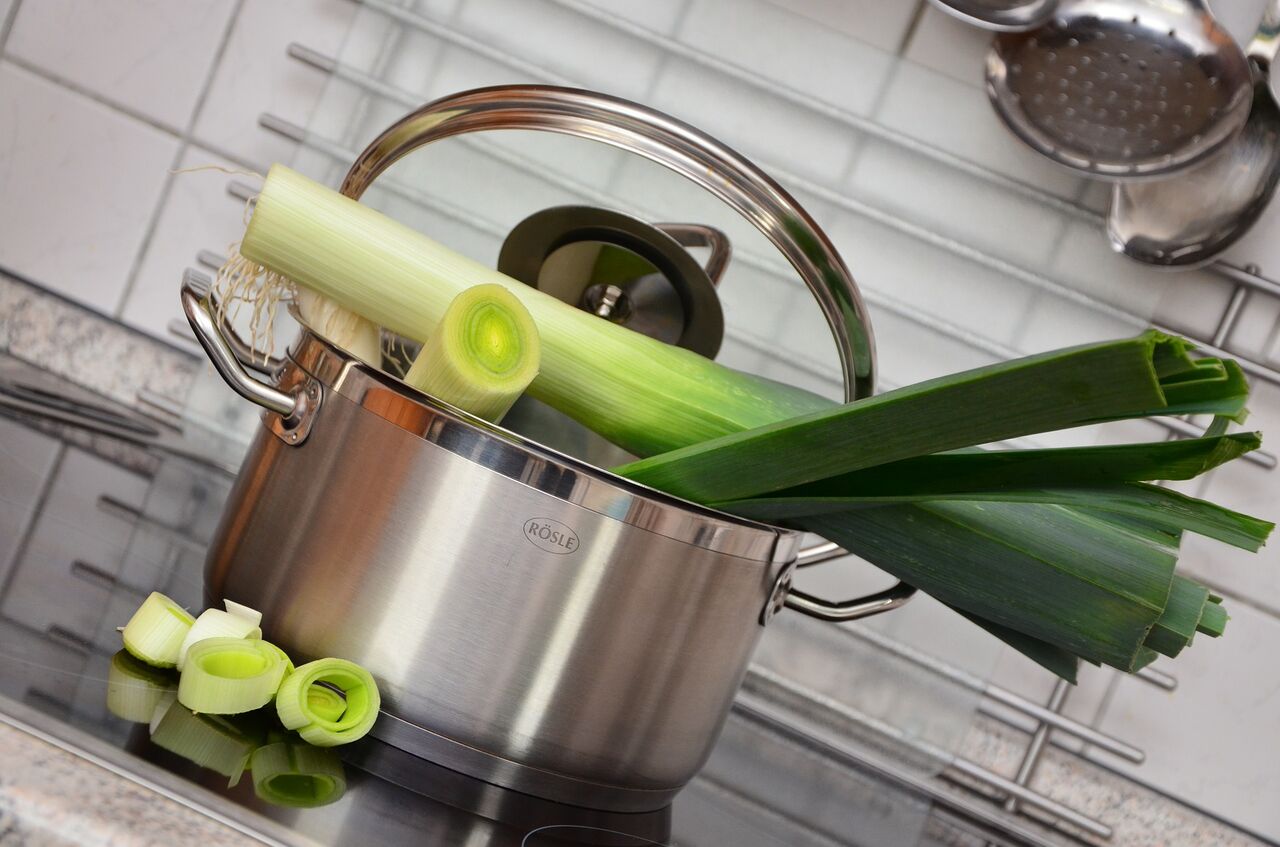by Sharon Quercioli

Leeks are wonderful and delicious vegetables that are related to allium veggies like garlic, scallions and onions. However, they are milder than their cousins and quite a bit larger. Allium veggies are great because they offer a unique combo of sulfur nutrients and flavonoids. In fact, most food gurus recommend that you squeeze in at least one serving of a veggie in the allium category each day. Leeks in particular are about a half of a cup for a serving.
Health Benefits
Leeks contain a flavonoid called kaempferol. That has been proven to help protect the lining of your blood vessels from different types of damage. Leeks also contain B vitamin folate. Folate is a great vitamin that can help keep your homocysteine level in balance—key to a good cardiovascular system.
There hasn’t been a lot of research done on leeks in particular (other than their benefits to your cardiovascular system). However, since they do belong in the same family as garlic and onions and they do include a large amount of karmpferol, it can be noted that leeks can help in the areas of low level inflammation and oxidative stress. This means leeks can help provide some amounts of protection against or aid in the lessening of the symptoms of diseases like type 2 diabetes, allergic airway inflammation, rheumatoid arthritis, obesity and atherosclerosis.
It’s healthy for you… but what exactly IS a leek?

Leeks look like oversized scallions. When you find them in the store, you should look for a leek that is firm, with white stalks and dark green leaves. Don’t choose the yellowed or wilted options. They are available all year round but are more abundant in the early fall through the early spring.
When you bring them home, store them without washing them or trimming them first. This will help keep them fresh and avoid any wilting. Wrap them fairly loosely in a produce bag to help hold in just a bit of moisture. They should keep in your refrigerator for anywhere between one and two weeks. You can keep fresh leeks in the freezer for about three months but be prepared to cook them right away when you pull them out of the freezer. They can lose some of their taste and texture.
When you cook leeks by themselves (by sautéing them in sauce or grilling them), they become highly perishable so make sure that you finish the leftovers within one or two days.
Our Favorite Leek Soup
Cauliflower leek soup is a great alternative to the carb heavy potato leek soup. Nothing is more enriching and filling on a cool day or as an easy homemade meal than a bowl of cauliflower leek soup. Seriously, this is one of the easiest healthy recipes that you will find out right now.
Cauliflower Leek Soup

What You’ll Need:
- A couple tablespoons of olive oil
- Three tablespoons of butter
- Three leeks that have been cut into pieces that are an inch in length
- A large head of cauliflower that has been chopped
- Three cloves of chopped garlic
- Eight cups of chicken or vegetable broth
- A salt and pepper shaker or grinder
- A cup of heavy cream
What You’ll Need To Do:
Heat both the olive oil and the butter in a large pot. Toss in the leeks, cauliflower, and garlic and saute it in the pot for ten minutes. Stir in your broth of choice. Reduce the heat down to a simmer. Cover it and let it simmer for about an hour.
Take the soup off of the heat and place the soup in an immersion blender. Alternatively, you can use a hand mixer if you don’t have a blender. Season it with the salt and pepper. If you choose to use heavy cream, use it now and continue blending the soup until it is all smooth. Then pour them into bowls and serve immediately.
Done! Enjoy!
